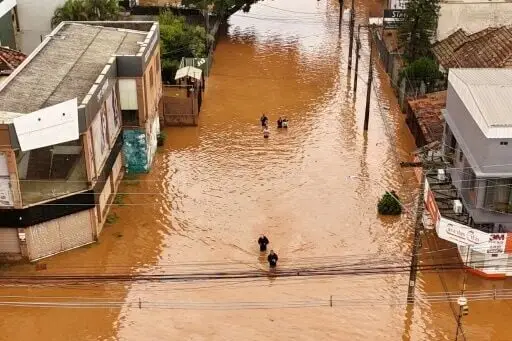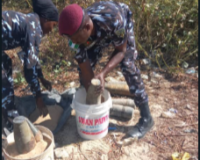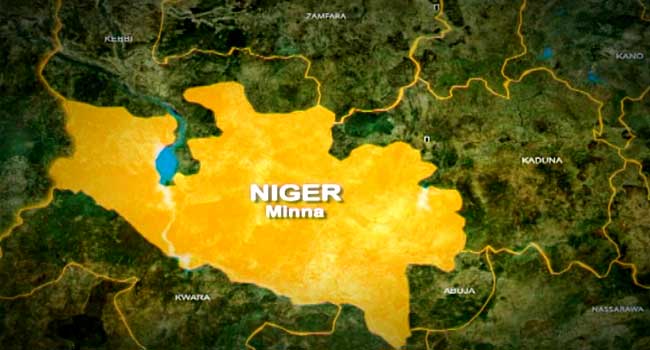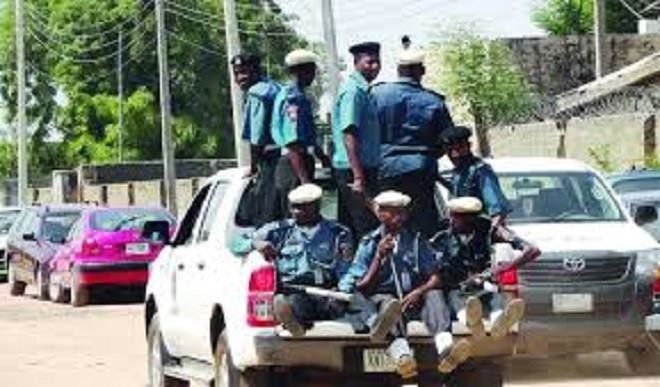The death toll from floods and mudslides triggered by torrential storms in southern Brazil has climbed to 58 people, with the major city of Porto Alegre particularly hard-hit, the country’s civil defense agency said Saturday.
The deaths included two people who died in an explosion at a flooded gas station in Porto Alegre where rescue crews were attempting to refuel, said an AFP journalist who witnessed the blast.
Overall, raging flood waters have left 74 people injured and another 67 missing, the civil defense agency said.
Fast-rising water levels in the state of Rio Grande do Sul were straining dams and particularly threatening economically important Porto Alegre, a city of 1.4 million.
The Guaiba River, which flows through the city, is at a historic high — at 5.04 meters (16.5 feet), well above the 4.76 meters that had stood as a record since the devastating floods of 1941.
Authorities were scrambling to evacuate swamped neighborhoods. “Despite the unfavorable weather, rescue actions are taking place day and night,” a government statement said.
President Luiz Inacio Lula da Silva posted a video of a helicopter depositing a soldier atop a house, where he used a brick to pound a hole in the roof and rescue a baby wrapped in a blanket.
In a northern Porto Alegre suburb, 61-year-old Jose Augusto Moraes looked shaken after fast-rising floodwaters engulfed his house and he had to call firefighters to rescue a trapped child.
“I lost everything,” he told AFP.
‘Going to be much worse’
With waters starting to overtop a dike along another local river, the Gravatai, Mayor Sebastiao Malo issued a stern warning on social media platform X, saying, “Communities must leave!”
And in a live transmission on Instagram, Rio Grande del Sul governor Eduardo Leite said the situation was “absolutely unprecedented,” the worst in the history of a state that is one of Brazil’s wealthiest.
Residential areas found themselves underwater as far as the eye can see, with roads destroyed and bridges swept away by powerful currents.
Rescuers faced a colossal task, with entire towns — some left without electricity or drinking water — made inaccessible.
At least 300 municipalities have suffered storm damage in Rio Grande do Sul since Monday, according to local officials, displacing more than 24,600.
‘Water up to my waist’
Roughly a third of the displaced have been brought to shelters set up in sports centers, schools and other facilities.
“When I left the house, I was in water up to my waist,” a haggard-looking Claudio Almiro, 55, told AFP in a cultural center converted to a shelter in a suburb north of Porto Alegre.
He said that while he had lost everything, “Many people lost their lives, so I raise my hands to heaven and thank God for having survived.”
The rains also affected the southern state of Santa Catarina, where one man died Friday when his car was swept away by raging flood waters in the municipality of Ipira.
Lula, who visited the region Thursday, blamed the disaster on climate change.
The devastating storms were the result of a “disastrous cocktail” of global warming and the El Nino weather phenomenon, climatologist Francisco Eliseu Aquino told AFP on Friday.
South America’s largest country has recently experienced a string of extreme weather events, including a cyclone in September that claimed at least 31 lives.
Aquino said the region’s particular geography meant it was often confronted by the effects of tropical and polar air masses colliding — but these events have “intensified due to climate change.”
AFP







